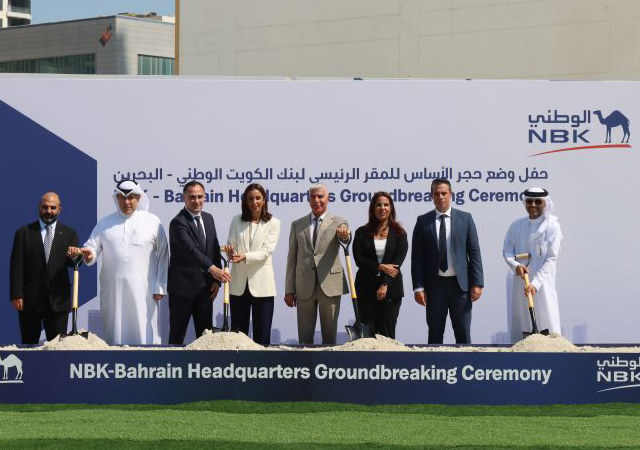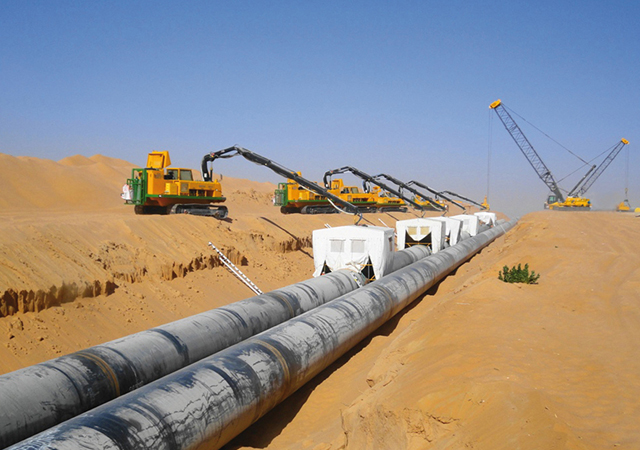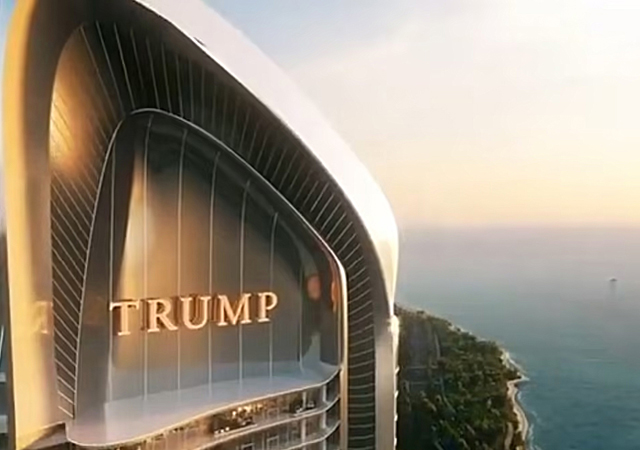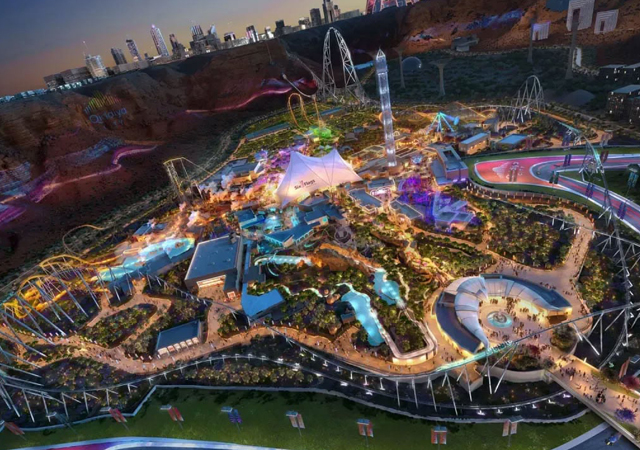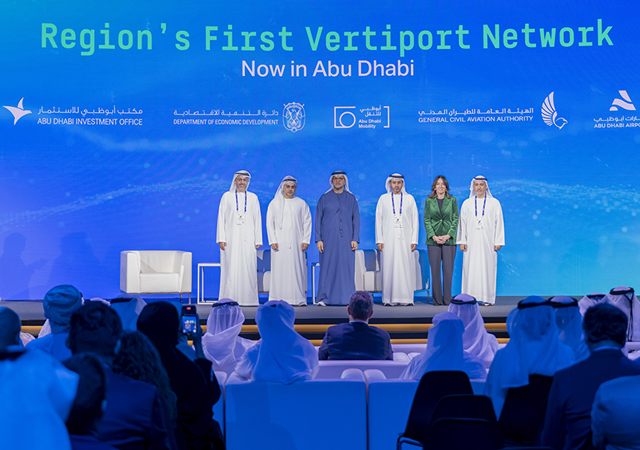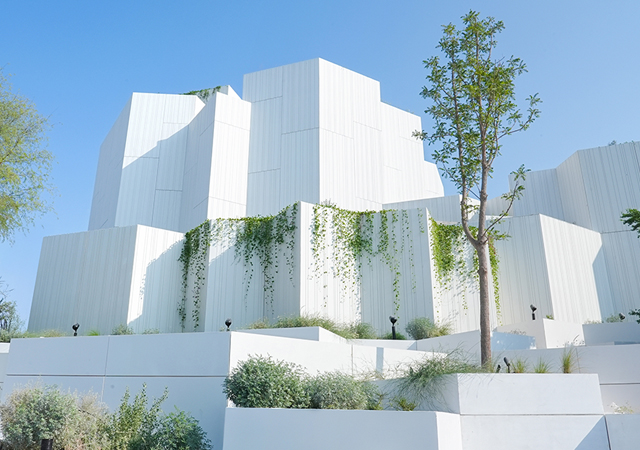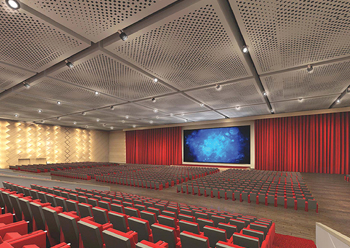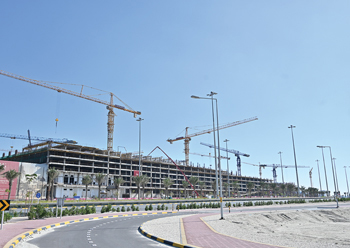
 Work is under way on the Marassi Galleria mall at Marassi Al Bahrain.
Work is under way on the Marassi Galleria mall at Marassi Al Bahrain.
Contributing over seven per cent of Bahrain’s GDP, the construction sector maintains its vibrancy as work continues on major industrial, infrastructural and real estate projects in the country. In fact, in the second quarter of 2019, the construction sector was one of the highest growing non-oil sectors with an increase of four per cent compared to the same period last year.
The nation is poised to open the doors to its striking global gateway – the new Bahrain International Airport terminal – with the start of commercial operations anticipated by March. The state-of-the-art terminal has been built as part of the $1.1-billion Airport Modernisation Programme, which has been an important source of business for the construction sector.
Another key source of work was Aluminium Bahrain’s (Alba) $3-billion expansion project that was inaugurated at the end of last year, which has put the nation on the global map as it now hosts the world’s largest single-site aluminium smelter outside China.
Also in the industrial sector, Bahrain flagged off work on yet another mega project – the $6-billion Bapco Modernisation Programme.
A crucial factor that has bolstered the country’s economy and kept the cogs of the construction sector turning is the GCC Development Fund, which was launched in 2011 and which continues to propel many of Bahrain’s vital infrastructure projects such as the airport expansion, and the North Manama Causeway.
According to Fitch Solutions’ infrastructure report on Bahrain, over the longer term, the country’s construction sector is expected to achieve an annual average growth of six per cent between 2020 and 2028. Rising investment in the construction of residential buildings will be a major contributor to headline the sector’s growth over the coming decade, along with the rise in population, which will drive power, energy and water infrastructure demand.
Trading Economics, an online platform that provides historical data, economic forecasts, news, and trading recommendations, also provides an optimistic outlook for Bahrain. According to the platform, GDP from construction in Bahrain increased to BD238.86 million ($628.05 million) in the second quarter of 2019 from BD234.74 million in the first quarter of 2019. The construction sector’s contribution to the GDP is projected to trend around BD248.17 million in 2020 per quarter, according to Trading Economics econometric models.
The total value of ongoing/planned construction projects pipeline in Bahrain as of June 2019 is $105.4 billion, according to BNC Construction Intelligence. Some of the massive projects on the drawing boards are the second Bahrain-Saudi causeway (the proposed $3.5-billion King Hamad Causeway), the $2-billion Bahrain Metro, and the North Manama Causeway Project (fourth Manama-Muharraq crossing).
The country has also been exerting efforts to boost tourism and the meetings, incentives, conferences and exhibitions (MICE) sector and the airport expansion will be a key enabler. A key project for the MICE segment is the new BD83.6-million ($221.85 million) international exhibition centre at Sakhir, the construction contract for which has been awarded to Cebarco Bahrain (see Page 60). A BD165-million Sports City has also been proposed to be built in close proximity, design work on which is under way.
 |
|
The new terminal at Bahrain International Airport is set to open in March. |
Airport
As part of the Airport Modernisation Programme, a new 210,000-sq-m terminal is currently receiving its finishing touches and the second phase of operational readiness trials is set to get under way.
The new terminal is four times the size of the existing one and will include a 4,600-sq-m departure hall, 104 check-in counters, 36 passport control booths and 24 security screening points. Once completed, the project will increase the airport’s annual passenger capacity from nine million to 14 million.
Among other developments, the Civil Aviation Affairs (CAA) building, which once served as the kingdom’s main airport, is now being transformed into a private aviation terminal to cater to VIPs and business leaders.
Plans have also been mooted for a second airport for Bahrain in 15 years.
 |
|
Bahrain Metro ... a much-awaited mega project. |
Roads & metro
Work on the North Manama Causeway got under way recently with the appointment of the Netherlands-based Royal Boskalis Westminster to undertake reclamation work on an area of 130 hectares. This work is expected to be completed in the third quarter of 2020.
The new 550-m bridge linking Muharraq and Manama will be the fourth of its kind between the two cities. Financing for the entire project, which will connect north Busaiteen and Bahrain Bay, is being covered by the Saudi Fund for Development.
Meanwhile, work on the proposed 25-km King Hamad Causeway – which will be the second causeway linking Bahrain and Saudi Arabia – is expected to begin in 2020. In October, a consortium of Aecom, KPMG and CMS was appointed to carry out the financial model, the design and engineering specifications and the prequalifications for the developers. Running parallel to the existing King Fahad Causeway, it will feature four lanes for vehicles and two lanes for the planned rail network that will be connected to the GCC Railway.
Among other key projects in the transport sector is Bahrain’s ambitious metro project, work on which will be flagged off soon with the appointment of a transaction advisor for Phase One of the project. Part of the kingdom’s Public Transport Masterplan 2030, Bahrain Metro will comprise a 109-km light rail network serving the country with four lines to be implemented in phases. In Phase One, two lines – running 30 km – will be constructed covering 20 stations. The network’s electric driverless trains will be capable of carrying 43,000 passengers per hour.
Power & water
In the power sector, the largest ongoing project is the $1.5-billion Al Dur 2 independent water and power project (IWPP). The project will have a capacity of 1,500 MW and a desalination component of 50 million gallons a day (MGD).
Bahrain has just given the go-ahead for projects worth BD615 million to expand the country’s electricity and water network as part of the second phase of the Al Dur power plant project. To help finance these projects, Kuwait Fund for Arab Economic Development (KFAED) has signed a KD29.5 million ($100 million) loan agreement, the latest in its KD140.8 million funding for the development of a 400-kilovolt (kV) transmission network. The project includes the construction of three substations of 220/400 kV in Al Hidd, Umm Al Hassam and Riffa and a 400 kV substation in Ras Legrain.
In June 2019, the Electricity and Water Authority (EWA) launched a 12-km-long vital 220-kV power line linking the Seef district and Salman Town, as part of the kingdom’s ambitious BD473-million power infrastructure development plan which will see 15 220-kV substations and 48 66-kV substations being set up along with high-voltage cables across the country.
While plans are under way to boost capacity and the transmission network, Bahrain is not losing sight of the need to enhance energy efficiency and turn to renewables. Early last year, the country announced two action plans – National Renewable Energy Action Plan (NREAP) and the National Energy Efficiency Action Plan (NEEAP) – to spearhead its goals of increasing energy efficiency by six per cent over the next five years, and ensuring that renewables account for five per cent of the kingdom’s total electricity capacity by 2025 – equivalent to about 250 MW – which is targeted to rise to 10 per cent a decade after that. According to the Sustainable Energy Authority (SEA) – which is driving the NREAP – the combined total of actual and planned renewable energy systems in the kingdom is about 131 MW.
The bulk of this capacity will be provided by Bahrain’s largest solar project – a 100 MW solar power plant – being built in Askar on a build-own-operate (BOO) basis by a consortium comprising Saudi-based Acwa, Japanese contractor Mitsui & Company and Bahrain industrial conglomerate AlMoayyed.
The plant, along with other solar power initiatives, will achieve over 50 per cent of the national energy target by 2025. Other plants in Bahrain include a 5-MW facility in Awali built in 2012 and two solar units by Tatweer. The second of Tatweer’s solar plants with a capacity of 3 MW plant was inaugurated in Sakhir in December.
Industry
The two mammoth projects that have dominated construction activity in the industrial sector are Alba’s Potline 6 expansion and the Bapco Modernisation Programme (BMP).
Alba’s Line 6 was inaugurated by His Majesty King Hamad bin Isa Al Khalifa in late November. The project, which also included the construction of a 1,792-MW power station, will boost Alba’s production by 540,000 tonnes, bringing its total capacity to 1.5 million tonnes per year.
Meanwhile, work on the Bapco Modernisation Programme is more than 25 per cent complete and will help boost the oil refining company’s capacity to 380,000 barrels per day (bpd) from 267,000 bpd, besides enhancing the product slate, energy efficiency and transforming it into one of the most competitive and environmentally-compliant refineries.
Another key project in the oil and gas sector is the new liquefied natural gas (LNG) import terminal which was expected to be operational by the year-end.
Tourism & culture
Bahrain is now home to the world’s largest underwater theme park with the recent opening of the first phase of Dive Bahrain. The initial phase involved submerging a 70-m-long Boeing 747 as the first attraction of the 100,000-sq-m theme park. The dive park also includes a replica of a traditional Bahraini pearl merchant’s house; an artificial coral reef; and other sculptures that will provide a haven for coral reef growth and a habitat for sustainable marine life.
Bahrain also intends to build the region’s biggest water sports and maritime facility. Land has already been earmarked for the project at Salman Town.
To accommodate the surge in tourist arrivals, some 22 hotels are expected to open in the country during the next four years, according to the Bahrain Tourism and Exhibitions Authority (BTEA).
Healthcare facilities
In the healthcare sector, work has been launched on the King Abdulla Medical City, with the appointment of the main contractor for the 288-bed medical centre. The mega development, funded by a $1-billion grant from the late Saudi King Abdullah bin Abdulaziz Al Saud, will come up over a one-million-sq-m plot of land near Askar. Other major projects on the anvil include a new sports medicine hospital, an integrated medical clinics complex, and an industrial zone for health and medical industries.
 |
|
Mall of Dilmunia ... expected to open soon. |
Real estate
Bahrain has made sure-footed strides in its efforts to regulate the real estate sector and instil investor confidence in this vital segment of the economy. Among such measures were the setting up of its Real Estate Regulatory Authority (Rera) in March 2018 and the adoption of international real estate standards with the launch of new real estate valuation system, Bahrain Valuation Standards (BVS), and Bahrain Property Measurement Standards (BPMS) in October.
The introduction of the BVS for real estate is expected to create greater transparency, efficiency and consistency in the market, while BPMS will bring consistency to the process of real estate survey, and help achieve greater accuracy in measuring areas of real estate.
Apart from moves to regulate the sector, Bahrain has repeatedly attempted to renew the confidence of investors by trying to revitalise many of the stalled real estate developments in the country. The most recent of such projects was the Amwaj Gateway project which secured a buyer at the eighth auctioning attempt. The $183-million project, work on which halted in 2009 due to the global financial crisis, was originally scheduled for completion in 2010.
Given Bahrain’s moves to regulate the real estate sector and instil investor confidence in this vital segment of the economy, leading local developers as well as GCC and international investors have been spearheading the development of iconic projects in the country.
Among the most prominent master developments in Bahrain that have attracted investment are Bahrain Bay, which will boast the highest residential building in the country with the Golden Gate towers (see Page 62); Diyar Al Muharraq, one of the largest integrated residential communities in the kingdom; and Dilmunia, a mixed-use wellness hub.
Golden Gate is a freehold residential development comprising two towers containing 746 luxurious apartments as well as commercial and retail facilities. A joint venture between Kooheji Golden Gate and India’s Ajmera Realty and Mayfair Housing, the project recently marked a major milestone with the country’s largest residential building concrete pour.
Also taking shape at Bahrain Bay are two leisure projects, ‘The Park’ and ‘The Wharf’, which will feature seafront promenades and retail and food and beverage (F&B) outlets.
Meanwhile, Diyar Al Muharraq continues to evolve virtually every month with construction under way on myriad projects including the iconic waterfront Marassi Al Bahrain being developed by Eagle Hills Diyar, a joint venture between Abu Dhabi-based Eagle Hills and Diyar Al Muharraq.
An 875,000-sq-m development, Marassi Al Bahrain comprises 6,000 apartments, the Marassi Galleria mall and two world-class hotels – The Address Marassi Al Bahrain and Vida Marassi Al Bahrain, with around 300 branded apartments and 270 hotel rooms – a 34,000-sq-m central park, 2 km of sandy beach and restaurants and cafés.
Dilmunia Island, being developed by Ithmaar Development Company (IDC), is gearing up for the opening of the family-centric Mall of Dilmunia, which will be home to the largest mall entertainment facility in Bahrain with the opening of Funscape World.
Dilmunia, being built on a 125-hectare man-made island off the Muharraq coast, will feature residences, a hotel and leisure element and shopping districts anchored around a health and wellness cluster. Phase Three infrastructural works on the $1.6-billion project has been completed, according to IDC. Also completed within the island are The Treasure by Bin Faqeeh Development Company, The Essence of Dilmunia by Ahmed Al Qaed Group, and Seavilla by IDC, while under construction are CanalView by Naseej, The Hanging Gardens by Ahmed Al Qaed Group, and a resort project by Al Tijaria, apart from the Mall of Dilmunia.
Among other developers, Bahrain Real Estate Investment (Edamah) has been creating vibrancy in the market with the launch of a variety of projects, ranging from beach and seafront developments to car-parks. The property arm of the Mumtalakat, the kingdom’s sovereign wealth fund, Edamah is spearheading the development of the BD45-million Sa’ada West mixed-use project. It has also launched work on a multi-storey car-park at the Salmaniya Medical Complex.
Also in this sector, significant progress has been made on accommodating industrial ventures in the country. Among such projects is the Investment Gateway – Bahrain project, where its developer Manara Developments Company has recently launched work on the second phase. Upon completion, Investment Gateway – Bahrain will span a total area of 29 million sq ft, making it the largest light industry project available for freehold ownership in Bahrain.







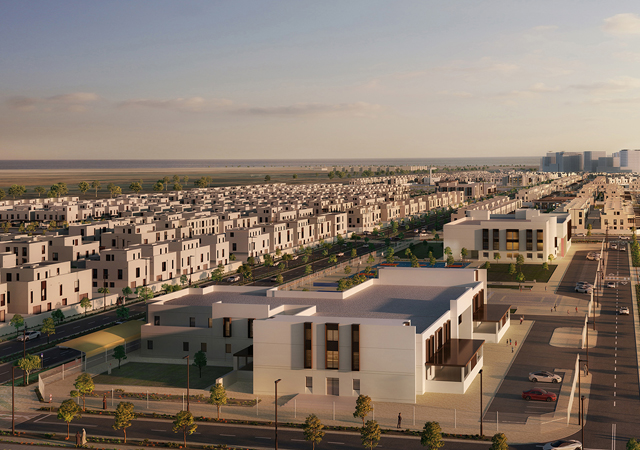

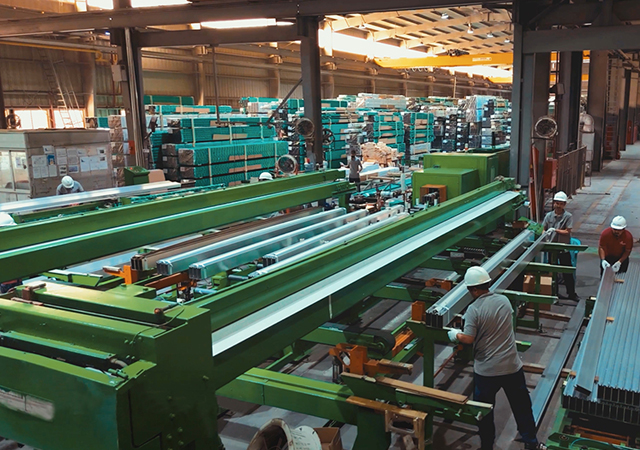



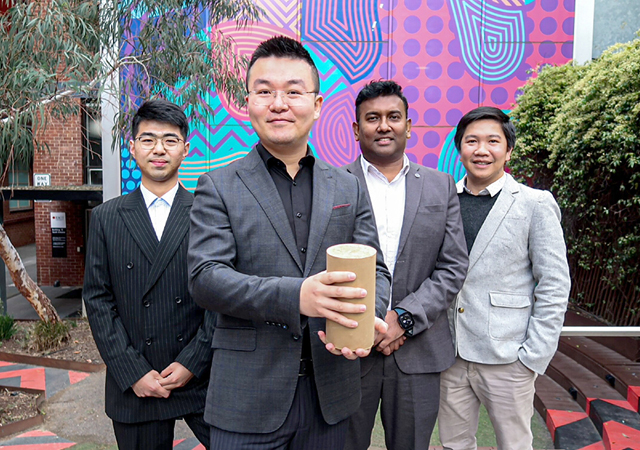



.jpg)


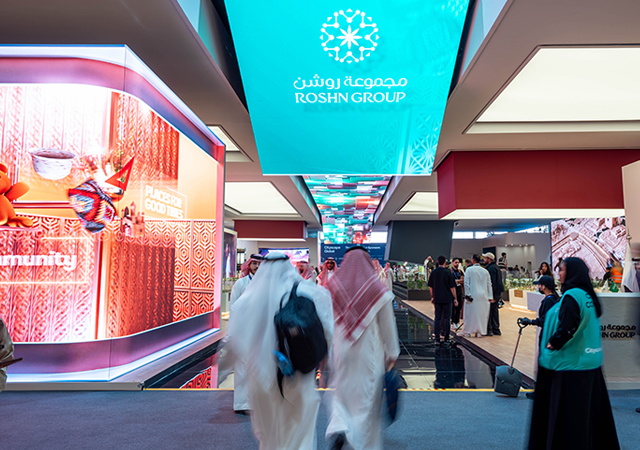








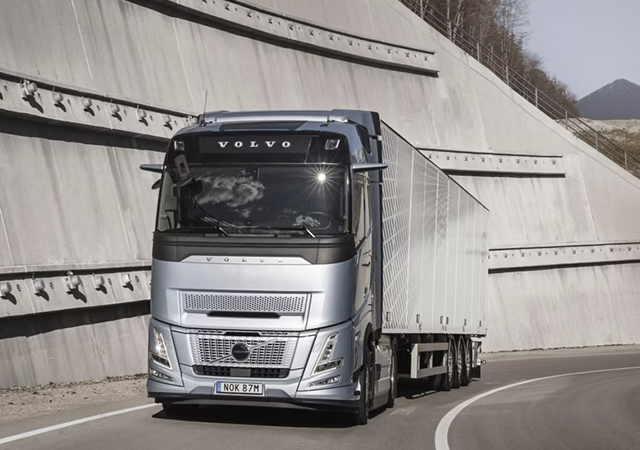

 (1).jpg)








